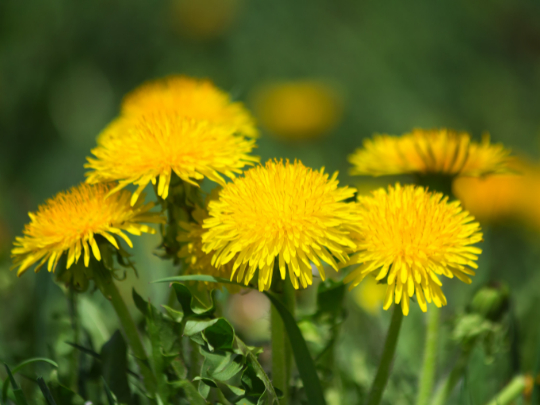Dandelions are super fun for kids, and some people even think they are delicious in salads! Check online; there are countless recipes to prepare them! Some botanists even praise dandelions for their medicinal purposes. They are rich in antioxidants and can help treat different diseases.
Scientists call them “Taraxacum Officinale.” What a beautiful name, isn’t it?
It is probably one of the most common wild perennial plant species that grows in multiple parts of the world, not only in North America. You can find them in Europe and different places in Asia, and guess what? They look exactly the same as those growing in your backyard in Chester County, PA.
Dandelions are wild broadleaf herbs that appear in spring and grow a beautiful yellow-colored flower. Later in the season, the yellow flower dries out, and the petals turn into a fluffy white head that contains seeds. Sure, you blew on a few when you were a kid and observed their seeds flying around!
So, if they are tasty, potentially good to combat health issues, and fun to play with, why do homeowners want to get rid of them?
Are Dandelions Bad For Lawns?
Although some die-hard fans will explain how their root systems can naturally aerate your lawn, most people consider dandelions a weed because of their invasive nature.
The main problem with dandelions is their deep and robust root system.
When the plant dies at the end of fall, the root system survives the cold Pennsylvanian winter, and the following spring, dandelions will come back to colonize an entire area; each plant grows a dense root system.
If you have too many dandelions in your yard, it can have dire consequences by depriving your lawn of the water and nutrients to thrive.
Irremediably, dandelions will continue to spread and take over your turf. They will create territorial competition with other species, including your lawn’s plants.
That’s how they can rapidly become a problem if you have no effective management strategy.
How to Kill Dandelions?
Everything depends on the problem you are facing and the time of year. There are a few things to know about dandelions and their lifecycle.
Dandelions are among the first plants to grow in spring. Depending on temperatures, they develop into a rosette of leaves on the lawn’s surface. A plant grows and blooms about ten weeks after germination. Mature plants are active from May through October.
There are two different ways to kill them:
- Roll up your sleeves, pull dandelions out, and make sure to extract the roots; otherwise, they will grow back. That may not be the best option if you have a few square yards to control unless you have too much time on your hands.
- Use a science-based approach at different times of the year to contain their growth. If dandelions are already blooming, post-emergent broadleaf weed control will take care of them.
If you choose the second option, remember that dandelions are perennials and will come back unless the root system is completely killed and no seeds fly and land in your yard. So, it is unlikely that you will be done with them for good in only one post-emergent application.
Can Dandelions Grow Back?
They will!
Therefore, you need to use the right approach to control their growth during different seasons, from March through November.
Another great way to reduce their spread is to create competition among different species. What does that mean?
We explained earlier that dandelions will create territorial competition with other species, including your lawn’s plants. The same concept applies to them. You need to create competition against dandelions.
“How is that possible?” you may ask.
The answer is straightforward – Fertilize your lawn during the growing season to increase the strength of your turf’s plants.
If your lawn’s plants are stronger and more resilient, they become more challenging to weaken or get outgrown. Ultimately, your lawn gives a harder time for weeds or unwanted herbs to grow and proliferate. A denser and healthier lawn is the key.
Besides a comprehensive lawn fertilization program, there is something else you should consider to combat weeds and dandelions. We always recommend to our clients to respect specific mowing heights for the Pennsylvanian climate:
- Cut your lawn to 3.5 to 4 inches in spring and fall.
- Do not cut your lawn shorter than 4 to 4.5 inches during the summer.
In other words, never cut your lawn too short.
If your lawn’s plants cover the soil, it complicates the germination process of weeds and dandelions because, like any other living organism, they need light to grow.
Your Takeaways
If you do not like to see dandelions in your yard, pulling them out might be too daunting if your lawn surface is substantial. Hence, you may need to consider a complete lawn care program because a beautiful lawn always combines multiple things that you need to do well and consistently over time. Therefore, pick the right lawn care program and apply the knowledge you have gained with this article.

